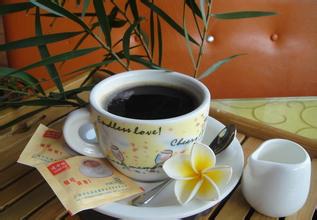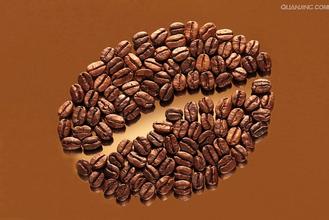Introduction to the characteristics of coffee flavor and taste varieties in Santa Rita Manor, Colombia.
After the news of Napoleon I's invasion of Spain in 1808 spread to Colombia, the people of that place immediately launched an independence movement. On July 20, 1810, a large-scale uprising against Spanish colonial rule broke out in Bogota and the Governor of New Granada was arrested. In November 1811, representatives from all over the world organized Congress in Bogota, established the New Granada Joint Provincial Government, and declared independence on November 11. But Kundinamaka did not recognize the federation. At the end of 1812, the debate over the formation of a regime eventually led to civil war. It broke out again in 1814. In mid-1815, a large Spanish expedition arrived in New Grenada. Overthrew the United provincial government. In May 16, royalists took control of the whole of New Grenada. Spanish colonists made a comeback in 1815. On August 7, 1819, S. Bolivar led the insurgents to defeat the Spanish colonial army at the Battle of Boyaca and conquered Bogota on the 10th, ending Spanish colonial rule.
Greater Columbia
In his letter from Jamaica in 1815, Bolivar envisioned that when South America was liberated from Spanish colonial rule, New Granada and Venezuela should form a country, named Colombia. In August 1819, Bolivar's Patriotic Army defeated the Spanish colonial army at the Battle of Boyaca and liberated Bogota. As a result, New Granada and most of Venezuela have been liberated. With the consent of the patriotic army and people of New Granada, Bolivar proposed in the Venezuelan Congress held in Angostura in December of the same year that Venezuela and New Granada unite to form a unified country. On December 17, Congress passed a resolution formally establishing the union of the two regions.
Greater Republic of Columbia
Greater Republic of Columbia
The Republic of Colombia. In May 1821, the State of Colombia held a Constituent Assembly in Kukuta, the interim capital, which adopted and promulgated the first Constitution of Colombia on August 20. The Constitution provides for a centralized republic and a series of decrees declaring the abolition of slavery, the liberation of slaves and their children, the prohibition of slave trade, and the equal rights of citizens, with freedom of speech and the press. The meeting elected Bolivar as the first President of the Republic and Santander as Vice President. In May 1822, General Bolivar Sucre led the army to liberate Quito, after which Ecuador announced its accession to the Republic of Colombia.
Colombia, located in the northwest of South America, is a beautiful country with a long history. Indians have lived on this land since ancient times. It was colonized by Spain in 1531 and gained independence in 1819. It was renamed in 1886 to commemorate Columbus, the discoverer of the American continent. In 1808, a priest introduced coffee to Colombia for the first time from the French Antilles via Venezuela.
Colombia has four treasures: flowers, gold, emeralds and coffee. You can see the importance of coffee Colombia. And there may be very few coffee in the world named after a country, such as Nestle Coffee and Blue Mountain Coffee are not named after a country. Colombia is the first country to use the name of the country as a brand of coffee. Colombian coffee is famous for its quality, taste and high taste. Colombia's coffee production occupies a very important part of the country's economic life, with annual exports of about 1.5 billion US dollars, accounting for a large proportion of its foreign trade.
Just as only wine produced in the champagne region of France can be called champagne, only coffee produced in Colombia and picked by hand can be called "Colombian coffee". Colombian coffee is one of the few original coffee sold in the world under the name of the country. In terms of quality, it has won praise unmatched by other coffee.
Today, Colombia is the world's third largest coffee producer and exporter, the world's largest exporter of Arabica coffee beans and the world's largest exporter of washed coffee beans.
The unique geographical environment creates Colombian coffee.
Colombia has beautiful mountains and rivers, beautiful scenery, pleasant climate, spring all year round, fresh air and refreshing air. Colombia's mild climate, humid air, and diverse climate make it a harvest season all year round, with different kinds of coffee ripening at different times. What they grow is Arabica coffee beans of unique quality, and the coffee made from this coffee bean has a rich taste and endless aftertaste, which can be called fine coffee. Nowadays, many people equate "Colombian coffee" with "high quality" and "good taste".

Important Notice :
前街咖啡 FrontStreet Coffee has moved to new addredd:
FrontStreet Coffee Address: 315,Donghua East Road,GuangZhou
Tel:020 38364473
- Prev

Panamanian Illeta Estate Coffee Flavor Taste Features of the region
Panama is located in Central America on the Isthmus of Panama, east of Colombia, south of the Pacific Ocean, Panama map of Panama west of Costa Rica, north of the Caribbean Sea. The territory is S-shaped connecting North America and South America, and the Panama Canal connects the Atlantic Ocean and the Pacific Ocean from north to south, known as the world bridge. [5]Panama has an area of 75517 square kilometers and a length of
- Next

Introduction of boutique coffee beans in coffee flavor and taste areas of Chateau Saint Roman, Costa Rica
1502 C. Columbus discovered the coast of Costa Rica on his fourth voyage. Since then, the Spanish colonists have invaded many times. The city of Catago was founded in 1563 and Costa Rica was colonized by Spain and placed under the jurisdiction of the Governor's Office of Guatemala. During the colonial period, under the cruel enslavement and oppression of the Spanish colonists, the Indians were almost wiped out and there was little labor available for enslavement.
Related
- Does Rose Summer choose Blue, Green or Red? Detailed explanation of Rose Summer Coffee plots and Classification in Panamanian Jade Manor
- What is the difference between the origin, producing area, processing plant, cooperative and manor of coffee beans?
- How fine does the espresso powder fit? how to grind the espresso?
- Sca coffee roasting degree color card coffee roasting degree 8 roasting color values what do you mean?
- The practice of lattes: how to make lattes at home
- Introduction to Indonesian Fine Coffee beans-- Java Coffee producing area of Indonesian Arabica Coffee
- How much will the flavor of light and medium roasted rose summer be expressed? What baking level is rose summer suitable for?
- Introduction to the characteristics of washing, sun-drying or wet-planing coffee commonly used in Mantenin, Indonesia
- Price characteristics of Arabica Coffee Bean Starbucks introduction to Manning Coffee Bean Taste producing area Variety Manor
- What is the authentic Yega flavor? What are the flavor characteristics of the really excellent Yejasuffi coffee beans?

